Significance
Baishatun Mazu Foot Pilgrimage is Taiwan’s longest foot pilgrimage in terms of distance. It is also the only pilgrimage that changes its route, length in time, and choice of stops each year. The route is determined by Mazu (see “Pilgrimage Route Ordained by Mazu” below for more details), and once even followed an ancient pilgrimage route that required followers to ford the Zhuoshui River. It is unquestionably the most unique pilgrimage in the country. The procession, rituals, folklore performance teams (zhèntóu), and welcoming ceremony at the final destination of the pilgrimage all reflect the unaffected grace of this folk custom. Baishatun Mazu Foot Pilgrimage is regarded as one of the two biggest Mazu pilgrimages in Taiwan (the other being the Dajia Mazu Pilgrimage).
History
Baishatun (literally “white sand village”) was originally dubbed Baishadun (“white sand heap”) by the settlers who arrived in the mid-eighteenth century. Early residents had among them a Mazu statue that they enshrined in a villager’s house to provide spiritual support to the whole village. In the mid-1800s, local villagers began raising funds to construct a temple, which was completed in 1863. The foot pilgrimage, with more than two-hundred years of history, began long before the temple was built. Its distance is the longest among all Mazu pilgrimages done on foot. Starting from Baishatun Gongtian Temple in Tongsiao, Miaoli County, the pilgrimage winds through Taichung, Changhua, and Yunlin Counties, finally stopping at Beigang Chaotian Temple before it returns. The round trip is about four hundred kilometers in total. Another Mazu statue from the Shanbian Mazu Temple in Miaoli also joins the Baishatun Mazu statue on a sedan chair for the pilgrimage.
Special Features

1First Mazu—A Soft-Bodied Statue Older than the temple enshrining it, the Mazu statue in the main hall of Baishatun Mazu Temple is soft, meaning the limbs are bendable. Unlike most Mazu temples, which have various statues sharing responsibilities within the temple, one of the Mazu statues in Baishatun Mazu Temple alone serves as the Inaugural Mazu (kāijīmā; the first Mazu in a temple), the Presiding Mazu (zhèndiànmā; the main Mazu in a temple), and the Pilgrimage Mazu (jìnxiāngmā; the statue that is carried on annual pilgrimages and processions). Naturally, this statue is given the title “First Mazu” (dàmā). The statue has a kindly and gentle expression. Upon examination, master sculptor Wu Qing-bo concluded that the sculpture might once have been enshrined by royalty or aristocrats in mainland China. When First Mazu statue leaves the temple for her annual pilgrimage, the Second Mazu statue (black-faced) and the Third Mazu statue (pink-faced) serve together as Presiding Mazu.
Older than the temple enshrining it, the Mazu statue in the main hall of Baishatun Mazu Temple is soft, meaning the limbs are bendable. Unlike most Mazu temples, which have various statues sharing responsibilities within the temple, one of the Mazu statues in Baishatun Mazu Temple alone serves as the Inaugural Mazu (kāijīmā; the first Mazu in a temple), the Presiding Mazu (zhèndiànmā; the main Mazu in a temple), and the Pilgrimage Mazu (jìnxiāngmā; the statue that is carried on annual pilgrimages and processions). Naturally, this statue is given the title “First Mazu” (dàmā). The statue has a kindly and gentle expression. Upon examination, master sculptor Wu Qing-bo concluded that the sculpture might once have been enshrined by royalty or aristocrats in mainland China. When First Mazu statue leaves the temple for her annual pilgrimage, the Second Mazu statue (black-faced) and the Third Mazu statue (pink-faced) serve together as Presiding Mazu.
2Pilgrimage Route and EventsThe Baishatun Mazu Foot Pilgrimage involves the longest walking distance among all Mazu pilgrimages in Taiwan. The route starts from Baishatun Gongtian Temple in Miaoli and ends at Beigang Chaotian Temple in Yunlin. The round trip totals about four hundred kilometers. Apart from having the longest walking distance, it is also unique for its unpredictable route each year. The only things decided beforehand are the starting date, the date of the Renewing of Divine Spirit (at Beigang Chaotian Temple), and the date of return to Baishatun Gongtian Temple. The actual route and stops all depend on instructions from Mazu given during the pilgrimage. The dates are determined through Poe divination (a common traditional Chinese divination method, in which moon-shaped wooden blocks are thrown and the way they land determines divine guidance). The divination is conducted at 1:00 p.m. on the 15th day of the last month of the lunar calendar each year. The entire pilgrimage includes the following events: Poe Divination, the Raising of the Head Banner, the Mounting the Palanquin Ceremony, the Departure of the Procession, the Renewing of Divine Spirit (yìhuǒ), the Return to the Temple, and the Pot-Opening Ritual. The Baishatun Mazu Foot Pilgrimage is truly a one-of-a-kind experience.
3Raising of the Head BannerThree days before the pilgrimage begins, the committee chair of Gongtian Temple and the organization in charge of that year’s pilgrimage pay their respects by bowing to Mazu while holding a ceremonial banner, then attach the banner to one of the dragon columns in the temple as a public announcement that the annual pilgrimage is about to begin. The banner has multiple symbolic functions, including directing the pilgrimage team and warding off evil spirits and bad fortune. The flag bearer is always a man armed with Chinese halberds to emphasize its yang attribute (the half of yin and yang that represents strength, sun, and the male essence).
4Mounting the PalanquinThe Mounting the Palanquin Ceremony starts with Mazu boarding the palanquin to embark upon her journey. The palanquin is then carried to the front of the temple to await the Mazu from Shanbian Mazu Temple in Miaoli, who joins her there. The procession then heads out toward Beigang.
5Renewing of Divine Spirit (yìhuǒ)The Renewing of Divine Spirit is the most important ceremony of the entire pilgrimage. The ceremony is held at Chaotian Temple, and begins with a Taoist priest of the temple lighting gold-leaf paper from the temple’s eternal flame. Once alight, the paper is then placed in the “Eternal Incense Burner” (wànnián xiānghuǒ) while priests chant scriptures asking for Mazu’s blessings. After the fire has been sanctified, it is put into the fire pot brought each year from Baishatun, which is then placed in the Pot Carrier (xiāngdān) and sealed. Each year the organization in charge of the pilgrimage selects male believers to guard the Pot Carrier and prevent the flame from being extinguished on the road back to Baishatun. The undying flame is a symbol of Mazu’s never-ending power and blessings.
6The Pot-Opening RitualUpon Mazu’s return to Baishatun, she is placed back into the main shrine together with the fire pot. The pot is left to release its incense smoke and divine power throughout the temple for twelve days, at which point the opening ritual is held. When the pot is reopened, participants of the pilgrimage hold up flags they took along on the pilgrimage and pray to Mazu. Temple staff then transfer the fire into an incense burner in the temple to finalizing the pot opening ritual.
7Pilgrimage Route Ordained by Mazu The biggest difference between Baishatun Mazu Foot Pilgrimage and other pilgrimages is its unpredictable nature. The route of the journey is determined by the way in which Mazu’s palanquin moves or tilts. Her movements indicate the direction, resulting in unpredictable routes, schedules, and stops. Especially at major intersections, the palanquin often makes sudden movements (xíngjiào; these are generally natural up and down jounces or left and right sways) that are interpreted to mean directions given to the procession. The palanquin might lead the procession across major bridges or small footpaths. The most memorable incident in recent years was the fording of the Zhuoshui River on foot in 2001.
The biggest difference between Baishatun Mazu Foot Pilgrimage and other pilgrimages is its unpredictable nature. The route of the journey is determined by the way in which Mazu’s palanquin moves or tilts. Her movements indicate the direction, resulting in unpredictable routes, schedules, and stops. Especially at major intersections, the palanquin often makes sudden movements (xíngjiào; these are generally natural up and down jounces or left and right sways) that are interpreted to mean directions given to the procession. The palanquin might lead the procession across major bridges or small footpaths. The most memorable incident in recent years was the fording of the Zhuoshui River on foot in 2001.
8Pilgrimage Participants (xiāngdīngjiǎo)Mazu pilgrimages have a long history in Taiwan, and most only grow bigger each year. The number of participants at the Baishatun Foot Pilgrimage has also been increasing. Since its early days in the Qing dynasty, pilgrimage participants have been called Xiang Ding Jiao (literally “Strong Legs of Incense and Lanterns). They are thus named because families often sent fit men to act as bearers and help carry banners, gold-lead paper, straw sandals, food rations, umbrellas, and clothing while walking day and night on foot alongside Mazu’s palanquin. Today, the long journey is like a rite of passage for young participants. The pilgrimage is a tough challenge both physically and spiritually, but every year, believers continue to willingly complete the long and exhausting trek with Mazu. It is truly an impressive demonstration of the strength of their religious beliefs.
9Palanquin Carriers—Male, Female, and even Foreign Visitors Because there were only a small number of participants in its early years, everyone was originally permitted to help carry the palanquin during the Baishatun Mazu Foot Pilgrimage, regardless of age or gender. This was an uncommon practice, since tradition at the time typically prevented women from participating in spiritual rituals. This unusual tradition eventually evolved into today’s practice, in which anyone, regardless of gender, ethnicity, or nationality, is allowed to help carry the palanquin at suitable sections of the pilgrimage. This is yet another element unique to the Baishatun Mazu Pilgrimage.
Because there were only a small number of participants in its early years, everyone was originally permitted to help carry the palanquin during the Baishatun Mazu Foot Pilgrimage, regardless of age or gender. This was an uncommon practice, since tradition at the time typically prevented women from participating in spiritual rituals. This unusual tradition eventually evolved into today’s practice, in which anyone, regardless of gender, ethnicity, or nationality, is allowed to help carry the palanquin at suitable sections of the pilgrimage. This is yet another element unique to the Baishatun Mazu Pilgrimage.
Reminders
Every year, temple staff conduct Poe divination to receive Mazu’s instructions regarding the beginning and ending dates of the pilgrimage. Those who wish to participate should contact the temple and register as a Xiang Ding Jiao. Participants will each be given an armband for identification. Since the palanquin (luánjiào), fire pot carrier (xiāngdān), and Head Banner (tóuqí) are all regarded as sacred items, participants are warned against touching them unless instructed to do so.
Panoramic
Directions